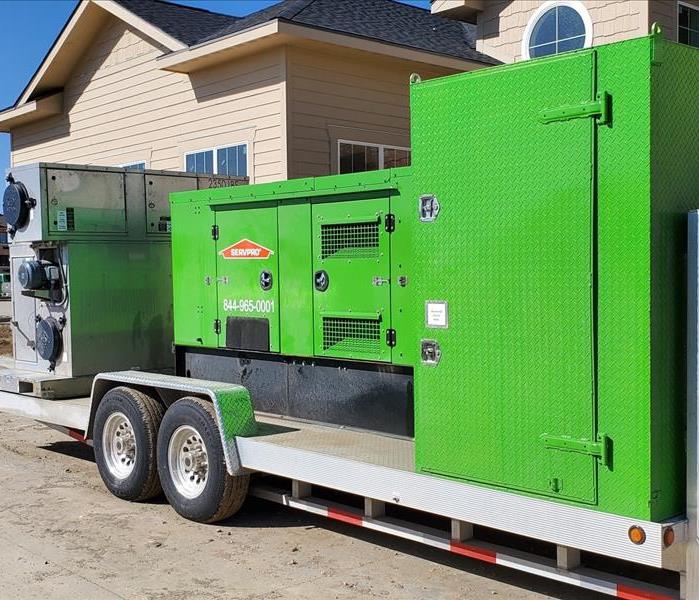What Is A Desiccant?
5/13/2020 (Permalink)
Our desiccant helps the process of bringing the affected area back to a state of dryness and is mainly used for commercial losses. More specifically, it helps mitigate water damage. For larger scale losses, it acts as a large dehumidifier utilizes a generator to help with the process. These use an absorbent material to extract water from the air. The material is heated to drip the moisture into a water tank. Desiccant dehumidifiers are designed to work more effectively in lower temperatures. Dehumidifiers are designed to keep a room’s humidity levels in check, so the air is more comfortable and fewer physical signs of damp air are noticed, helping minimize the chance of mold. The desiccant can be utilized if your home has been flooded, especially if the wood is soft to touch in that area. Softwood can indicate rotting and windowsills are particularly vulnerable. If you notice mold or mildew then SERVPRO of Des Moines East & SW can use the desiccant to help get the moisture in the air and materials to a more stable level. Desiccants are used on a larger scale water loss to remove moisture from the air. We used these as a tool in our balanced drying system in place or alongside dehumidifiers on a larger scale project. Desiccants operate differently than dehumidifiers. Desiccants do not collect water through condensation. They vent moisture-laden air from inside the structure to outside the structure using a ventilation system. Desiccants are usually large units and sit outside the structure with venting tubes and air input tubes from and to the structure. They create the greatest vapor pressure and are best used when trying to dry wood flooring, plaster, or concrete. They work on the principle of sorption rather than condensation. Water vapor in this process is adsorbed by a silica gel and then that silica gel is reactivated by energy causing the desiccant to release its moisture to the outside air.





 24/7 Emergency Service
24/7 Emergency Service